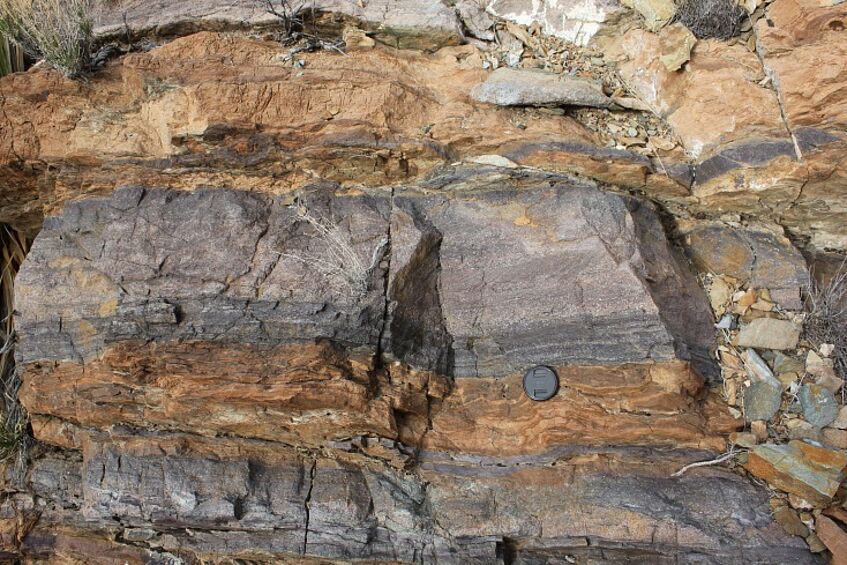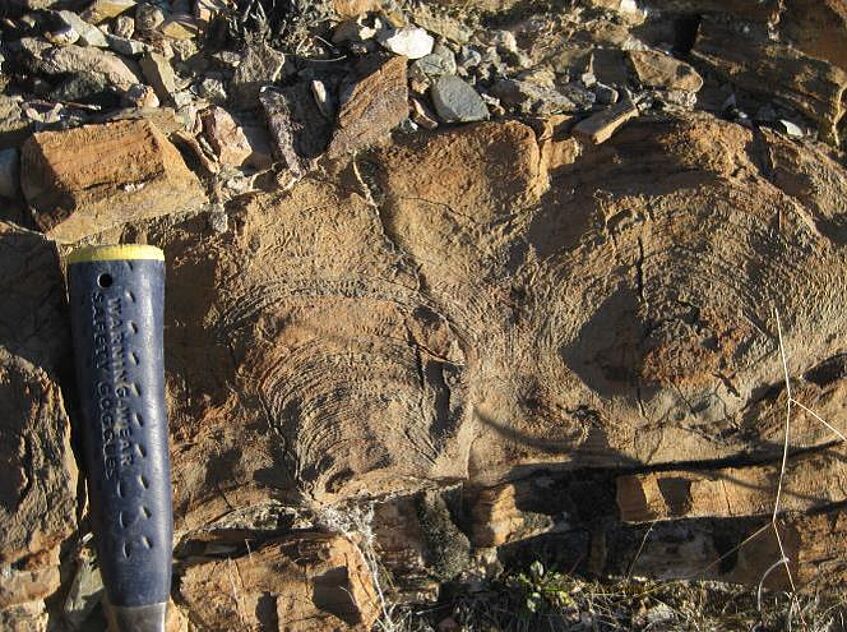Neoproterozoic carbonate – clastic sequences of Death Valley, USA
Research Team:
Daniel Smrzka
Daniel Le Heron
Kristian Kuzel
Christoph Kettler
Tom Vandyk
Michael Joachimski
Susanne Gier

Carbonate – clastic sequences of the Neoproterozoic Horse Thief Springs Formation, Death Valley (© D. Smrzka)
The sedimentary record of the Pahrump Group in Death Valley comprises massive, well-exposed successions of carbonate and clastic deposits.
The Tonian to Cryogenian strata represent world-class examples of microbial carbonates deposited in the lead up to, and during Earth’s emergence from, Snowball Earth events, thus chronicling one of the most debated and arguably important events in Earth History.
Multiple cycles of small and large-scale carbonate – clastic sequences within the Neoproterozoic Horse Thief Springs Formation are composed of stromatolitic dolostone beds sandwiched between cross-bedded strata featuring ripple marks, trough-cross beds, and chertified ooid horizons.
These observations suggest a rapid switch between clastic sediment supply, sediment cut-off, and (re)-proliferation of microbial communities. The transition from the HTS Formation and the younger preglacial Beck Spring dolomite represents a phase of critical environmental change in the Tonian rock record.
Our research team will develop a depositional model capable of reconciling the clastic-carbonate cycles.
The question of Proterozoic dolomitization is part of an ongoing debate yielding various hypotheses.
Much of the effort regarding Proterozoic ocean chemistry and carbonate formation has focused on the aforementioned globally distributed cap dolostone sequences that precipitated in the aftermath of global glaciation.
However, significantly less attention has been paid to preglacial carbonate deposits that record events in the Tonian, which chronicles the beginning of the breakup of Rodinia, and leads up to the first global glaciation.
The Horse Thief Springs Formation of Death Valley is a prime target to investigate mechanisms of dolomite formation, which was frequently disrupted by rapid and sudden pulses of clastic deposition as evidenced by the sedimentological record. Despite these environmental perturbations, the Horse Thief Springs Formation hosts spectacular microfossil assemblages recognized as stromatolites that flourished in what may have been a shallow, proximal ocean.

Stromatolitic dolostones from the Neoproterozoic Horse Thief Springs Formation, Death Valley (© D. Smrzka).
